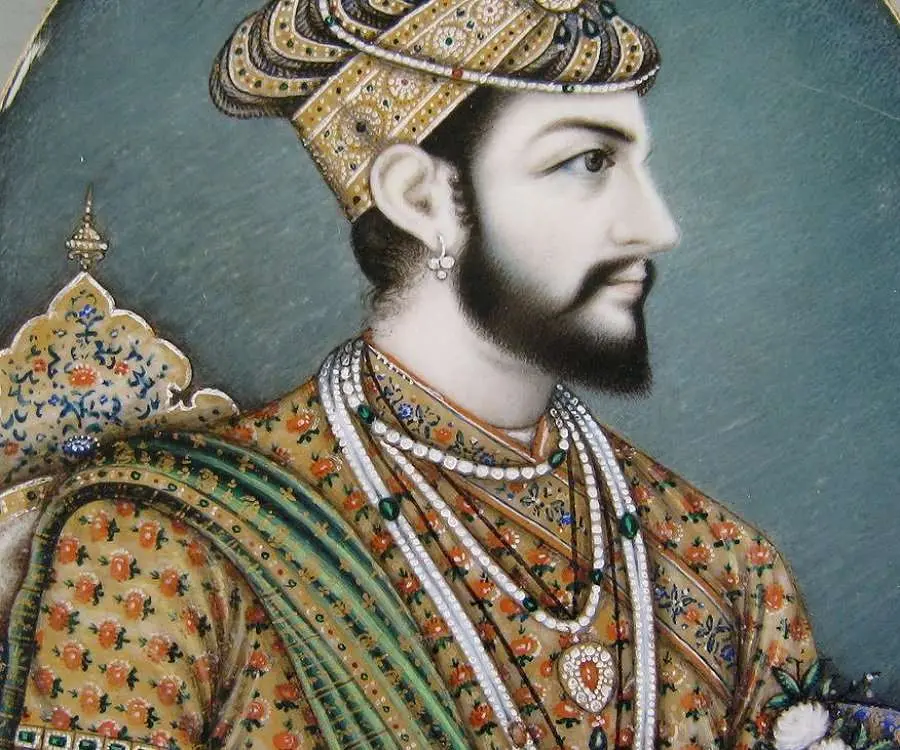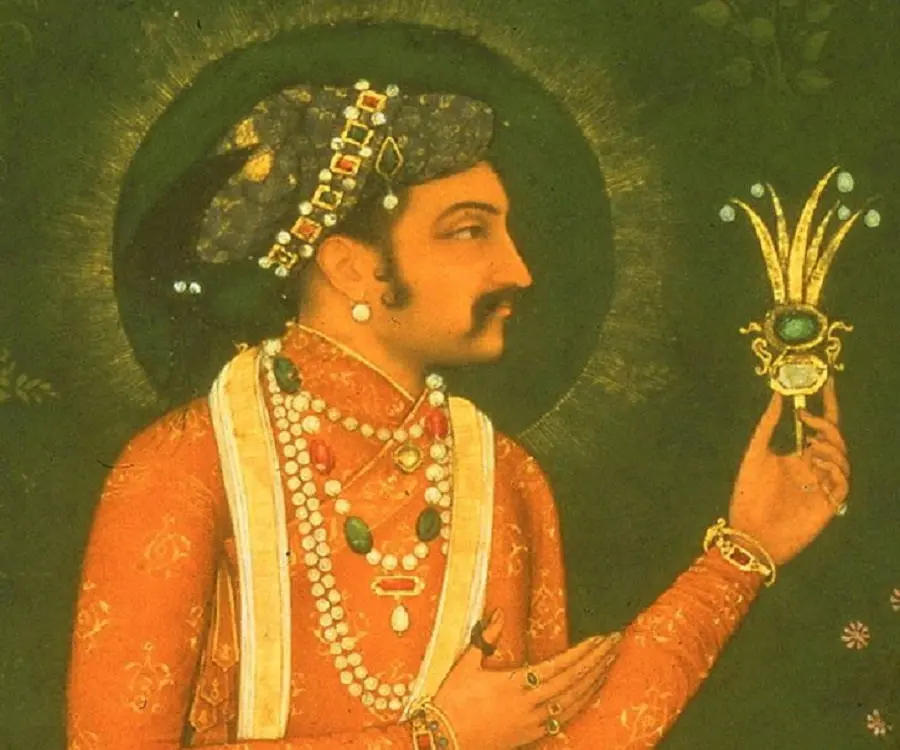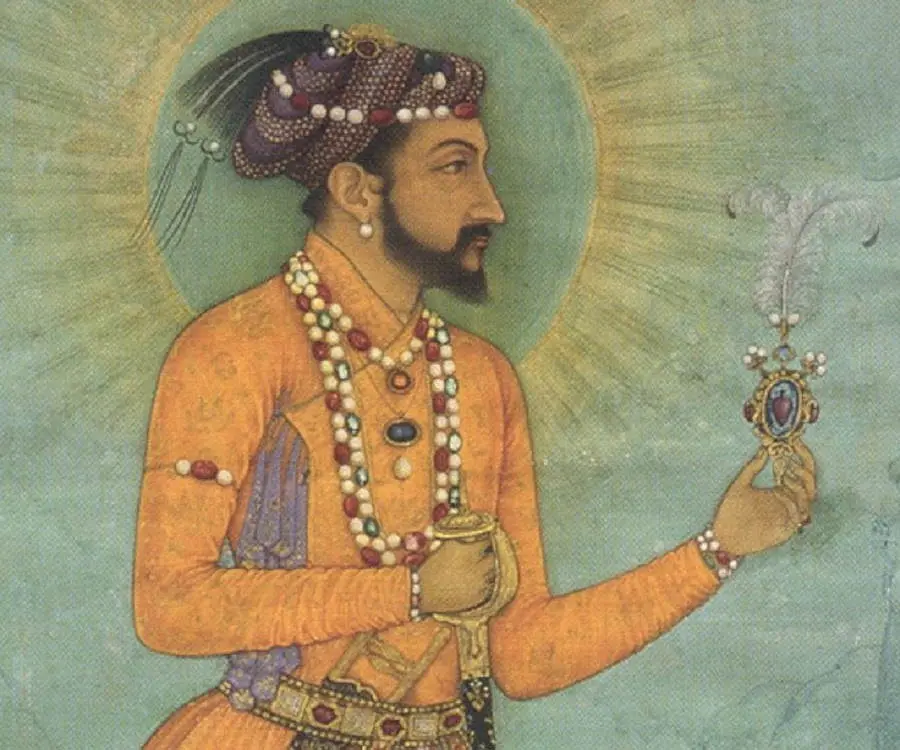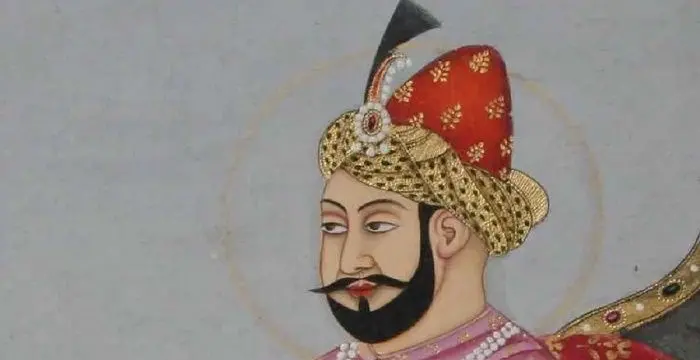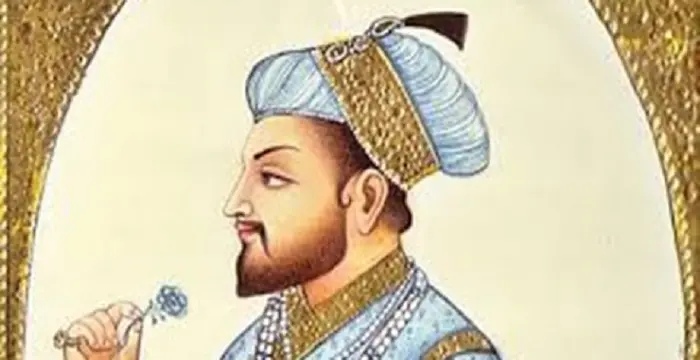
Shah Jahan - Emperors, Facts and Childhood
Shah Jahan's Personal Details
Shah Jahan was the fifth Mughal Emperor of India
| Information | Detail |
|---|---|
| Birthday | January 5, 1592 |
| Died on | February 1, 1666 |
| Nationality | Indian |
| Famous | Historical Personalities, Emperors & Kings, Emperors, Kings, Mughal Emperor |
| Spouses | Akbarabadi Mahal, Kandahari Begum, Mumtaz Mahal |
| Siblings | Khusrau Mirza |
| Known as | Shah Jehan, Shahjehan, Shihab-ud-din Muhammad Khurram |
| Childrens | Aurangzeb |
| Birth Place | Lahore |
| Religion | Islam, Sunni Islam |
| Gender | Male |
| Father | Jahangir |
| Mother | Taj Bibi Bilqis Makani |
| Sun Sign | Capricorn |
| Born in | Lahore |
| Famous as | Mughal Emperor |
| Died at Age | 74 |
// Famous Kings
Sundiata Keita
Sundiata Keita was the founder of the Mali Empire in West Africa. This biography profiles his childhood, early life, struggles, founding of empire, rule, administration, achievements and also gives some fun facts.
Ashoka
Ashoka was the third emperor of the Mauryan Dynasty and ruled almost the entire Indian subcontinent. This biography profiles his childhood, life, reign, achievements and timeline
Murad IV
Murad IV was one of the mighty Sultans in the history of the Ottoman Empire. This biography profiles his childhood, family, accession, rule, administration and timeline.
Shah Jahan's photo
Who is Shah Jahan?
Shah Jahan was the fifth Mughal Emperor of India, considered to be one of the greatest of the Mughals. He was the son of Emperor Jahangir and the grandson of Akbar the Great. He was very close to his grandfather and after ascending to the throne he took forward Akbar’s legacy and embarked on several military campaigns to expand his vast empire. As the third son born to Emperor Jahangir, initially it seemed unlikely that he would be the chosen heir to succeed his father. But a soothsayer had predicted before his birth that he would one day become the emperor. Even after the death of Akbar, he remained distant from the court politics when his father and brothers were engaged in conflicts over the throne. However, with time he became very ambitious for the throne and started eliminating all the brothers and nephews who he considered to be threats. He also grew closer to his father and was named the emperor upon Jahangir’s death. As the emperor he focused on expanding the vast Mughal Empire and became known for his love of architecture. During his reign India became the richest center of the arts, crafts and architecture. Shah Jahan is best known for constructing the Taj Mahal which he built in the memory of his wife the empress Mumtaz Mahal who died during childbirth.
// Famous Emperors
Sundiata Keita
Sundiata Keita was the founder of the Mali Empire in West Africa. This biography profiles his childhood, early life, struggles, founding of empire, rule, administration, achievements and also gives some fun facts.
Ashoka
Ashoka was the third emperor of the Mauryan Dynasty and ruled almost the entire Indian subcontinent. This biography profiles his childhood, life, reign, achievements and timeline
Murad IV
Murad IV was one of the mighty Sultans in the history of the Ottoman Empire. This biography profiles his childhood, family, accession, rule, administration and timeline.
Childhood & Early Life
Shah Jahan was born as Shah ab-ud-din Muhammad Khurram to Emperor Jahangir and his wife, the Rajput princess Bilquis Makani (Princess Manmati) on 5 January 1592, in Lahore, Punjab (now in Pakistan). He was Jahangir’s third son.
As a young child, he was primarily raised by Akbar’s first wife, the childless Empress Ruqaiya Sultan Begum, and was returned to his biological mother only when he was 13 years old.
He received an upbringing typical for a Mughal prince, and was given excellent martial training and was exposed to a wide variety of cultural arts, such as poetry and music.
Emperor Akbar died in 1605 and Jahangir succeeded to the throne. Khurram’s elder brother revolted against their father but was defeated. Khurram did not take interest in the political conflicts between his father and brother, focusing instead on his education and training.
Eventually he became closer to his father and Jahangir granted him the jagir of Hissar-Feroza, which had traditionally been the fief of the heir apparent, in 1607.
He got the first opportunity to display his military prowess during the Mughal campaign against the Rajput state of Mewar, in 1614. The young prince commanded an army numbering around 200,000 and led the attack, eventually forcing the rival king Maharana Amar Singh II to surrender to the Mughals.
His father sent him to the Deccan with the aim of extending the Mughal Empire and Khurram was victorious in his attempts. This delighted Jahangir who granted him the title of Shah Jahan and allowed him a special throne in his Durbar.
Shah Jahan became impatient for the crown and rebelled against his father with the support of Mahabat Khan in 1622. The rebellion, however, was quelled by Jahangir’s forces.
Accession & Reign
Jahangir died in late 1627 and Shah Jahan ascended to the throne in early 1628. Upon claiming the throne he set about eliminating his chief rivals and imprisoned his step-mother Nur Jahan who was a powerful political influence in the Mughal court. He had his own brothers and nephews executed so that he could rule without having to face any competition.
During his reign he was able to expand the empire considerably. He sent his sons with large armies to conquer territories on different fronts. He annexed the Rajput confederates of Baglana, Mewar and Bundelkhand, and went on to conquer the fortress at Daulatabad, Maharashtra. His son Aurangzeb also added several territories to the Mughal Empire.
Shah Jahan and his sons successfully continued their military campaigns and captured the city of Kandahar in 1638 from the Safavids. This led to retaliation of the Persians, led by Abbas II of Persia who reclaimed the territory after a few years. Even though Shah Jahan was unable to recapture it from the Persians, he was able to expand the Mughal Empire to the west beyond the Khyber Pass to Ghazna and Kandahar.
Famed for aesthetics, Shah Jahan was a patron of arts. During his reign the Mughal Empire was a rich center of arts, crafts and architecture. The emperor’s love for architecture is legendary; some of the nation’s most well-known architectural and artistic accomplishments were undertaken during his reign. The Taj Mahal, the Red Fort and the Jama Masjid in Delhi, and the Shalimar Gardens of Lahore are examples of Mughal architecture that survive to this day.
Major Work
Emperor Shah Jahan is best remembered as a patron of Mughal architecture and is known for the grand legacy of architectural structures constructed during his reign. The most famous of them is the Taj Mahal, which he built in the memory of his favorite wife the empress Mumtaz Mahal. The exquisite building, constructed from white marble underlaid with brick, took 20 years to complete. The Taj Mahal till date remains one of the most visited tourist attractions in India.
Personal Life & Legacy
Shah Jahan married several times, but his favorite wife was Arjumand Banu Begum (his second wife) also known as Mumtaz Mahal whom he married in 1612. Their marriage was a happy one, marked by genuine affection for each other. Mumtaz bore him 14 children. She suffered from complications during the birth of their last child and died of postpartum hemorrhage in 1631. Shah Jahan was grief stricken following her death. Shah Jahan also had children from his other wives.
He fell ill in 1658, and Dara Shukoh, his eldest son, assumed the role of regent due to Shah Jahan’s inability to manage the court. This angered Shah Jahan’s other sons who rebelled against their brother. Aurangzeb, the emperor’s third son, overpowered all of his brothers and placed Shah Jahan under house arrest in Agra Fort.
Shah Jahan’s eldest daughter, Jahanara Begum, voluntarily accompanied her father and took care of him in his old age. Shah Jahan died on 22 January 1666. His body was interred at Taj Mahal, next to the body of his beloved wife Mumtaz Mahal
// Famous Mughal Emperor
Akbar
Mughal emperor Akbar was one of the greatest monarchs in the history of India. This biography profiles his childhood, life, rule, achievements and timeline
Jahangir
Jahangir was the fourth Mughal emperor, counted amongst the greatest Indian Emperors. This biography of Jahangir provides detailed information about his childhood, life, achievements, works & timeline.
Humayun
Humayun was the second Mughal ruler of territories in the Indian subcontinent. This biography of Humayun provides detailed information about his childhood, life, achievements, works & timeline.
Shah Jahan biography timelines
- // 5th Jan 1592Shah Jahan was born as Shah ab-ud-din Muhammad Khurram to Emperor Jahangir and his wife, the Rajput princess Bilquis Makani (Princess Manmati) on 5 January 1592, in Lahore, Punjab (now in Pakistan). He was Jahangir’s third son.
- // 1605Emperor Akbar died in 1605 and Jahangir succeeded to the throne. Khurram’s elder brother revolted against their father but was defeated. Khurram did not take interest in the political conflicts between his father and brother, focusing instead on his education and training.
- // 1607Eventually he became closer to his father and Jahangir granted him the jagir of Hissar-Feroza, which had traditionally been the fief of the heir apparent, in 1607.
- // 1612 To 1631Shah Jahan married several times, but his favorite wife was Arjumand Banu Begum (his second wife) also known as Mumtaz Mahal whom he married in 1612. Their marriage was a happy one, marked by genuine affection for each other. Mumtaz bore him 14 children. She suffered from complications during the birth of their last child and died of postpartum hemorrhage in 1631. Shah Jahan was grief stricken following her death. Shah Jahan also had children from his other wives.
- // 1614He got the first opportunity to display his military prowess during the Mughal campaign against the Rajput state of Mewar, in 1614. The young prince commanded an army numbering around 200,000 and led the attack, eventually forcing the rival king Maharana Amar Singh II to surrender to the Mughals.
- // 1622Shah Jahan became impatient for the crown and rebelled against his father with the support of Mahabat Khan in 1622. The rebellion, however, was quelled by Jahangir’s forces.
- // 1627 To 1628Jahangir died in late 1627 and Shah Jahan ascended to the throne in early 1628. Upon claiming the throne he set about eliminating his chief rivals and imprisoned his step-mother Nur Jahan who was a powerful political influence in the Mughal court. He had his own brothers and nephews executed so that he could rule without having to face any competition.
- // 1638Shah Jahan and his sons successfully continued their military campaigns and captured the city of Kandahar in 1638 from the Safavids. This led to retaliation of the Persians, led by Abbas II of Persia who reclaimed the territory after a few years. Even though Shah Jahan was unable to recapture it from the Persians, he was able to expand the Mughal Empire to the west beyond the Khyber Pass to Ghazna and Kandahar.
- // 1658He fell ill in 1658, and Dara Shukoh, his eldest son, assumed the role of regent due to Shah Jahan’s inability to manage the court. This angered Shah Jahan’s other sons who rebelled against their brother. Aurangzeb, the emperor’s third son, overpowered all of his brothers and placed Shah Jahan under house arrest in Agra Fort.
- // 22nd Jan 1666Shah Jahan’s eldest daughter, Jahanara Begum, voluntarily accompanied her father and took care of him in his old age. Shah Jahan died on 22 January 1666. His body was interred at Taj Mahal, next to the body of his beloved wife Mumtaz Mahal
// Famous Emperors & Kings
Sundiata Keita
Sundiata Keita was the founder of the Mali Empire in West Africa. This biography profiles his childhood, early life, struggles, founding of empire, rule, administration, achievements and also gives some fun facts.
Ashoka
Ashoka was the third emperor of the Mauryan Dynasty and ruled almost the entire Indian subcontinent. This biography profiles his childhood, life, reign, achievements and timeline
Murad IV
Murad IV was one of the mighty Sultans in the history of the Ottoman Empire. This biography profiles his childhood, family, accession, rule, administration and timeline.
Xerxes I
Xerxes I (Xerxes the Great) was the fourth and the most famous king of the Archaemenid dynasty of Persia. This biography profiles his childhood, family, personal life, life history, achievements, campaigns, administration, death and other facts.
Sargon of Akkad
Sargon of Akkad, also called ‘Sargon the Great’, ‘Sarru-Kan’ and ‘Shar-Gani-Sharri’, was the founder and first king of the Akkadian Empire. This biography profiles his childhood, life, rule, administration, timeline, and gives some fun facts.
Abdullah of Saudi Arabia
Abdullah bin Abdulaziz Al Saud was the King of Saudi Arabia from 2005 to 2015 and the third wealthiest head of state in the world. Find more facts about his life, childhood and timeline.
Shah Jahan's FAQ
What is Shah Jahan birthday?
Shah Jahan was born at 1592-01-05
When was Shah Jahan died?
Shah Jahan was died at 1666-02-01
Where was Shah Jahan died?
Shah Jahan was died in Agra
Which age was Shah Jahan died?
Shah Jahan was died at age 74
Where is Shah Jahan's birth place?
Shah Jahan was born in Lahore
What is Shah Jahan nationalities?
Shah Jahan's nationalities is Indian
Who is Shah Jahan spouses?
Shah Jahan's spouses is Akbarabadi Mahal, Kandahari Begum, Mumtaz Mahal
Who is Shah Jahan siblings?
Shah Jahan's siblings is Khusrau Mirza
Who is Shah Jahan childrens?
Shah Jahan's childrens is Aurangzeb
What is Shah Jahan's religion?
Shah Jahan's religion is Islam, Sunni Islam
Who is Shah Jahan's father?
Shah Jahan's father is Jahangir
Who is Shah Jahan's mother?
Shah Jahan's mother is Taj Bibi Bilqis Makani
What is Shah Jahan's sun sign?
Shah Jahan is Capricorn
How famous is Shah Jahan?
Shah Jahan is famouse as Mughal Emperor




